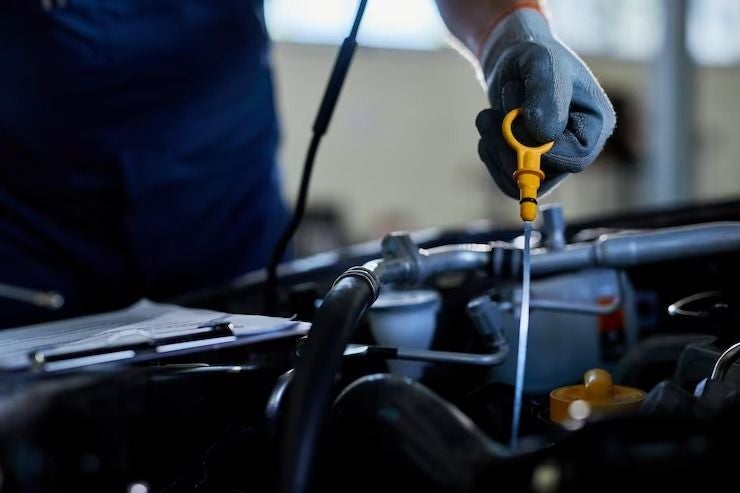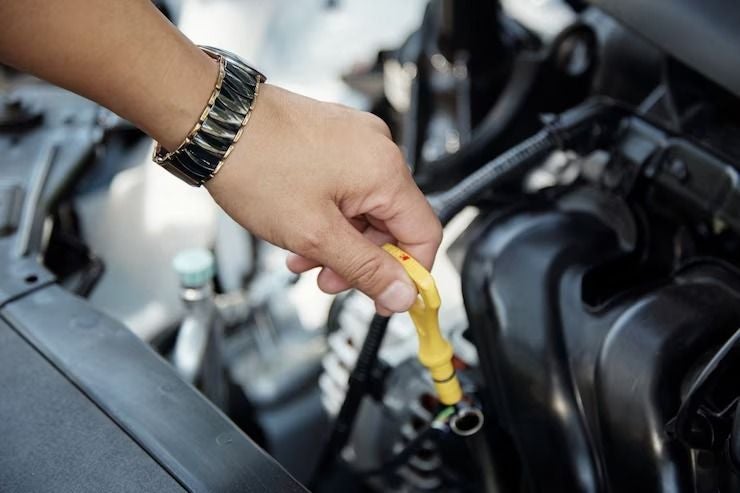Your car requires preventive maintenance to keep it running optimally. This means that certain things need to be checked, adjusted, and/or replaced at specific intervals. One of the most important things involved in car maintenance is a timely engine oil change.
Here’s all you need to know about engine oil changes and a step-by-step process of how you can change the engine oil of your car yourself.
The Significance of Timely Car Engine Oil Services

The primary role of engine oil is to provide lubrication. There are well over 2,000 metal parts in an engine that move against each other at terrific speed. A lack of lubrication may lead to insufficiency and inadequacy in your car's functions, and may even pose safety risks.
Besides the simple task of lubrication, engine oil performs other functions as well. It keeps the engine cool and leads to lower emissions.
Delays in engine oil changes at specified intervals will lead to faulty car functions. As the car’s biggest and most critical component, a faulty engine could leave you stranded with a large repair bill.
Also Read : 5 Signs Your Car Needs Servicing!
The Advantages of an Engine Oil Change

Here are some of the advantages of changing your car's engine oil:
- Gets rid of dirt and debris- Modern engine oils clean carbon deposits in the engine which helps reduce friction and emissions
- Improves engine performance- The reduced friction, clean emissions, and improved car functioning also mean better engine performance
- Ensures better fuel efficiency- When the engine is operating optimally, it also offers the best fuel efficiency possible
- Keeps emissions in check- With Pollution Under Control (PUC) checks now centralised, it is important to ensure your car meets the emission regulations. Modern cars have to work extra hard to keep emissions low, and you can help your vehicle with a timely engine oil change
- A healthy engine equals a longer lifespan- An internal combustion engine has over 2,000 moving parts, most of which run at really high speeds and temperatures. Something as little as a worn bearing can lead to complicated, expensive repairs at some point down the line, not to mention increased fuel consumption. Hence, it is best to keep your engine healthy with a timely car oil change
Also Read: Engine Oil Grades: Understanding the Different Types
How to Change Engine Oil Yourself

Here is a step-by-step guide to changing engine oil.
- To start with, you'll need a ramp. If you don't have a ramp, then you'll need a flat area, at least one jack and four jack stands, your owner's manual, a torque wrench or spanner for the drain bolt, the drain bolt gasket, replacement engine oil, a new oil filter, a pan to collect the new engine oil in, empty cans for the used engine oil, a funnel, cotton waste or disposable cloths to wipe your oily hands on, and finally a bunch of newspaper to lay on the ground so that you don't lay in the dirt.
- Go through your owner's manual to find out the type and quantity of engine oil your car requires. If it requires synthetic oil, don't use mineral oil - but the converse is acceptable. Also, check if your oil filter requires replacement. If it does, purchase one. Get a new drain bolt gasket as well while you're at the parts store. You'll need an oil collection pan that will hold significantly more than the amount of oil your engine holds.
- Put the car on the ramp. If you don't have access to a ramp, put the car on the jack stands. Make sure that each jack stand is stable; you don't want the car falling off and crushing you. It will help if you have a bottle jack to jack up the car, else you will spend a LOT of time and effort inserting and removing the standard jack at each jacking point - you'll have to do this a total of eight times, remember.
- Place the collection pan under the drain bolt. Loosen the bolt, and let the oil drain into the pan.
- Once it has drained fully, replace the oil filter if necessary. Your owner's manual will tell you where it is. If it doesn't, you'll require a service manual or a Haynes manual if your car is an international model.
- Replace the drain bolt with the new gasket. Use the torque wrench and make sure it isn't cross-threaded. If using a standard spanner, do not over-tighten it.
- Fill the new oil in the engine. Use the amount specified in the manual.
- Get the car off the stands.
- Use the funnel to fill the old engine oil in the empty cans.
- By this time, the oil in the engine has settled; use the dipstick to check the level. If required, top it up.
- Move the car a short distance to a clean patch of road and wait for a while. If you see oil dropped under the car, you've probably got a leak and will have to inspect the car for the source.
- Don't forget to carry the used newspaper along and throw it in the trash; for the oil, you'll have to dispose it of by giving it to a mechanic. Do not throw it into the trash or down the drain, it is an environmental hazard.
Be careful not to choose the wrong engine oil to avoid any mishap. The same goes for buying a substandard oil filter and not screwing in the drain bolt properly. Most of us may not have the space, tools, or expertise to do an engine oil change at home. Also, used engine oil cannot just be thrown down the drain or garbage bin and must be disposed of correctly. This may be difficult for many of us.
In addition, doing maintenance work on your car at home rather than at the service centre can void the car’s drive-train warranty. So, it is best to get any maintenance done at an authorised service centre. That way, the car will get all the care it requires to keep running in optimal condition.
FAQs
Your owner’s manual and your authorised service centre can help you with that information. In addition, most modern cars will show you a warning light on the dashboard when a service is due. The technology keeps track of both the distance the car covers as well as the time since the last engine oil change. Note: Used car buyers must do an engine oil change immediately upon taking delivery of the car, whether the seller says they have done it once or not.
Your owner’s manual, service centre, and dashboard are all good sources to let you know when your oil needs to be changed. In addition, your nearest service centre will usually give you a call when your service is due if you register your information with them or opt for a service with them.
The answer depends on the particular vehicle you have. Some cars require an engine oil change every six months, while some require it only annually. Whatever the time period, you should do an engine oil service whether or not you drive the car because the oil has active ingredients that help clean the carbon deposits in the engine and reduce emissions. These functions will be impaired once the time for the engine oil change has passed.






.jpg&w=828&q=75)






.jpg&w=828&q=75)
.jpg&w=828&q=75)
.jpg&w=828&q=75)
.jpg&w=828&q=75)

.jpg&w=384&q=75)

.jpg&w=384&q=75)
.jpg&w=384&q=75)

.jpg&w=384&q=75)
.jpg&w=384&q=75)

.webp&w=384&q=75)








